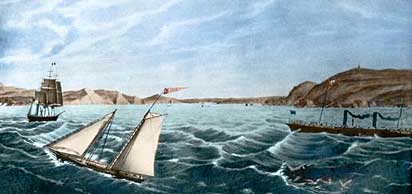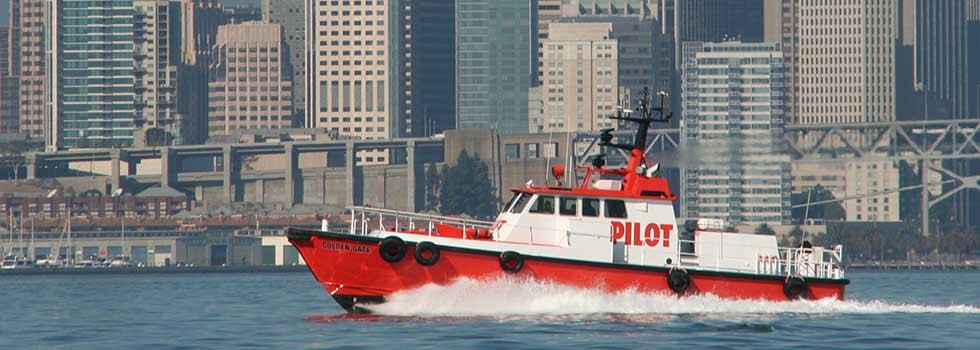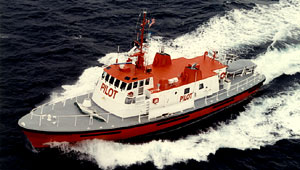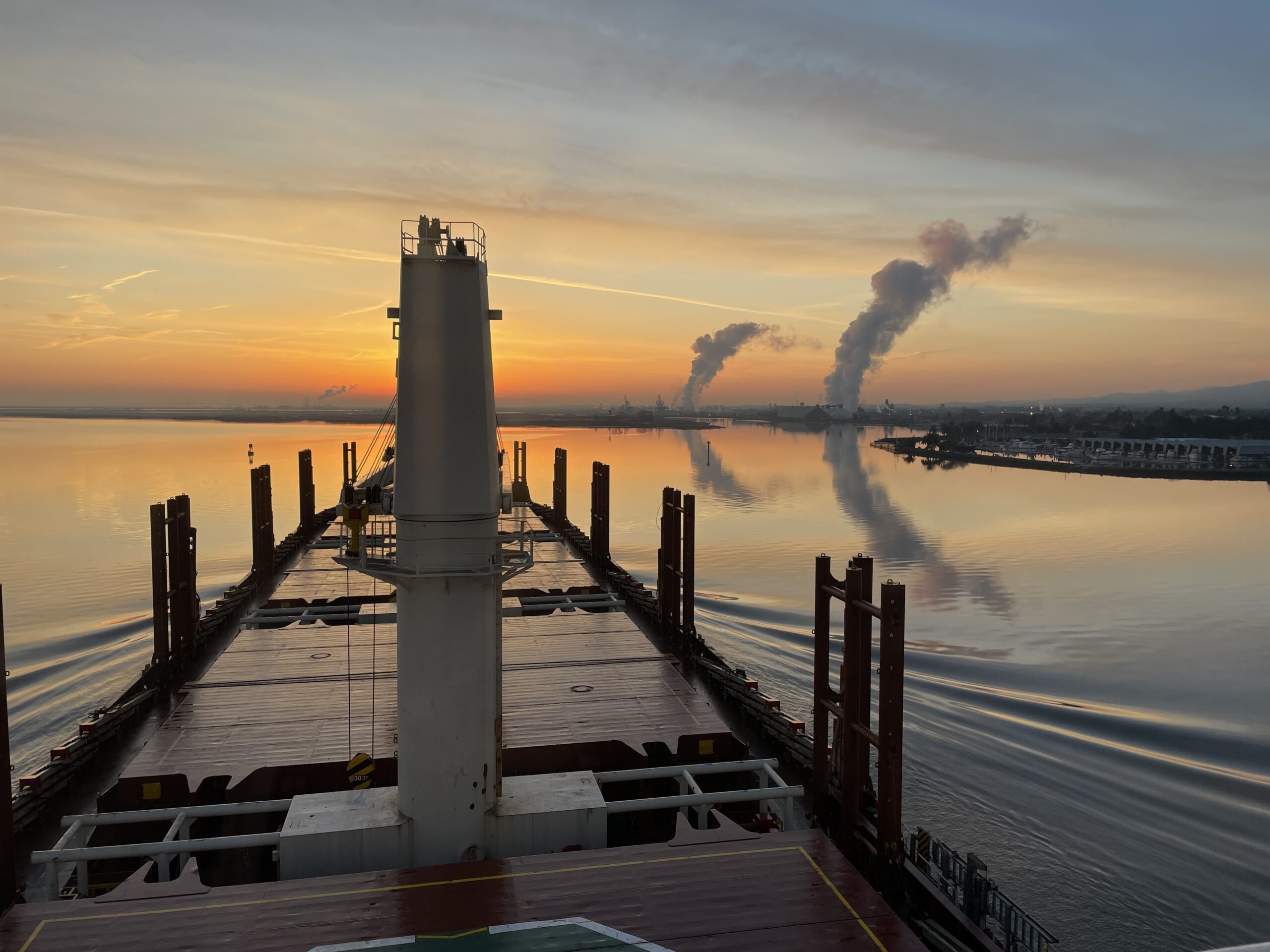
Description
Description
The Board of Pilot Commissioners for the Bays of San Francisco, San Pablo, and Suisun (Board) has served the people of California since its creation in the first legislative session of the State of California in 1850. The Board licenses and regulates up to 60 maritime pilots (pilots) who guide ships of 750 gross tons or greater into and out of the Board’s jurisdiction, navigating through some of the most challenging waterway in the United States. This work supports the economic engine of California by facilitating the movement of billions of dollars of imports and exports through ports in the Bay Area ports, Sacramento and Stockton. Alongside the economic benefits that Board licensed pilots support, the Board’s emphasis on pilot training and safety helps ensure protection of California’s natural resources including the more than 1,000 miles of coastline and the associated waters within the Board’s jurisdiction.

History, Statutes, Regulations and Jurisdiction
Overview
The Board of Pilot Commissioners for the Bays of San Francisco, San Pablo, and Suisun (Board) has served the people of California since its creation in the first legislative session of the State of California in 1850. The Board licenses and regulates up to 60 maritime pilots (pilots) who guide ships of 750 gross tons or greater into and out of the Board’s jurisdiction, navigating through some of the most challenging waterway in the United States. This work supports the economic engine of California by facilitating the movement of billions of dollars of imports and exports through ports in the Bay Area ports, Sacramento and Stockton. Alongside the economic benefits that Board licensed pilots support, the Board’s emphasis on pilot training and safety helps ensure protection of California’s natural resources including the more than 1,000 miles of coastline and the associated waters within the Board’s jurisdiction.
History
The Board was created by the first legislative session of the new state of California in 1850 and has been serving continuously ever since.
Government Hierarchy
Originally an independent state agency, on January 1, 2009, the Board became an entity under the auspices of the Business, Transportation, and Housing Agency (now known as the California Transportation Agency), which has responsibility for the movement of goods and people throughout the state of California. The BOPC’s expenses are paid for by the shipping industry through surcharges on pilotage fees and not by state or local taxes.
Statutes and Regulations
The Board’s statutes are found in the Harbor and Navigation Code (HNC) §1100 et. seq.
The Board’s regulations are found in Title 7, California Code of Regulations, Division 2, §§201-237.
Jurisdiction
Geographically, the Board’s pilotage jurisdiction” (jurisdiction) consists of from the high seas just beyond a sand bar approximately 12 miles west of the Golden Gate Bridge, and include navigable waters in the San Francisco Bay area, tributaries to Stockton and Sacramento, and Monterey Bay. The pilotage grounds cover over 100 square miles, and 70 separate marine terminals in ten counties. Ports and berths in the Board’s pilotage grounds are in the cities of San Francisco, Oakland, Redwood City, Martinez, Richmond, Benicia, Pittsburgh, Vallejo, Rodeo, Antioch, Alameda, Stockton, Sacramento, and Monterey.
The Board is the only state level pilot commission in California. Pilots navigating on other California waters operate under the authority of their federal pilot’s license and typically are regulated by a local government authority.

Structure, Committees, Meetings and Staff Support
Current Structure
The Board consists of seven members appointed by the Governor and one ex-officio member as follows:
- Two members are pilots licensed by the Board;
- Two members are shipping industry members – one from the tanker industry and one from the dry cargo industry;
- Three members are from the public who are neither pilots nor work for companies that use pilots; and
- The Secretary of the California Transportation Agency, who serves as an ex officio non-voting member
All voting Board members are appointed subject to confirmation by the Senate.
Voting Board members serve four-year terms and may be reappointed for one additional term. The public members come from varying backgrounds, should have no association with the marine or marine shipping industry, and usually have considerable business, government, or financial experience. In matters in which the industry and pilots have differing viewpoints, it is often the public members who will cast the deciding votes.
Committees
The Board does much of its work through a variety of committees that often include non-Board members as well as Board members. The committees develop their own subject matter expertise. They hold public meetings or workshops to gather evidence, develop consensus, and make recommendations to the Board. All committee recommendations are advisory. The Board has the ultimate authority to decide matters that come before it.
Meetings
The Board conducts meetings once a month at its office in San Francisco and holds meetings as necessary on specific topics. During public meetings, the Board may go into closed sessions to consider specific confidential agenda items that are allowed to be discussed in closed session per open meeting laws. Committee meetings are held on an as needed basis in person at the Board office and/or via teleconference. Board and committee meetings are open to the public, accessible via teleconference with agendas available at the Board office and on the Board website at: www.bopc.ca.gov.
Staffing/Staff Support
The Board employs five full-time employees: An Executive Director appointed by the Board, an Assistant Director (Career Executive Assignment) appointed by the Agency Secretary, a Staff Services Manager 1 (Specialist), and two Associate Governmental Program Analysts.
The Board contracts for specified support from the following governmental agencies and consultants:
- Administrative support (accounting, budgets, procurement, contracts, and personnel) from the California Highway Patrol.
- Pilot and trainee fitness determinations from the University of California, San Francisco School of Occupational Medicine (Board-appointed physicians).
- Pilot Continuing Education Program support from the California State University Maritime Academy and private sector training facilities.
- Pilot Trainee Training Program support from the California Department of Human Resources and California State University Maritime Academy.
- Information technology support from the California Department of Technology and the California Department of Transportation.
- Legal support from the Department of Justice.
- Audit support from the State Controller’s Office.
- Incident investigation support from private sector marine investigators (Commission Investigators).

Economic and Environmental Impacts
Economic and Environmental Impacts
The Board-licensed pilots facilitate 7,000-9,000 ship movements annually. According to recent studies, maritime trade in the San Francisco Bay has an overall economic value of more than $1.2 billion per day. This trade supports tens of thousands of California workers and helps deliver goods throughout the state and much of the nation. More than $35 billion in imports and $15 billion in exports each year can be attributed directly to ports served by the pilots licensed by the Board.
The Board’s jurisdiction includes more than 1,000 miles of coastline and 90 percent of the state’s marshlands. The region is home to fishing, tourism, and recreational opportunities serving tens of millions of visitors annually. The Board’s focus on safety helps ensure the region’s environment is preserved and protected.

Pilot Licensing, Discipline, Continuing Education and Safety
Licensees
Board-licensees* are individual maritime pilots (pilots) licensed by the Board to provide pilot services within the Board’s jurisdiction. A vast majority of Board licensees organize themselves as the San Francisco Bar Pilots (SFBP). Board-licensees have exclusive rights, to the extent not otherwise provided by federal law, to pilot vessels that are 750 tons or greater within the Board’s jurisdiction. Board-licensed pilots must also maintain a federal first-class pilot license, and necessary endorsements that allow them to pilot on the high seas and on the waters in the Board’s jurisdiction. Pilots board or disembark a ship when the vessel approaches the “SF” buoy several miles west of the Golden Gate Bridge and take or release navigational control of the vessel respectively. Pilots are also commonly called “Bar Pilots” because they board and disembark ships just beyond a treacherous sand bar which provides a natural obstacle to shipping. It becomes the pilot’s responsibility to guide the ship within the Board’s jurisdiction. The pilots provide service to all types of vessels, ranging from 100-foot tugs to 1,000 plus-foot supertankers and cruise ships.
Pilot Training, Licensing and License Discipline
The main function of the Board is pilot licensing involving the training of new pilots, issuance of original (first time) and annual renewals of a pilot license under the following conditions:
- Applicants to the Board’s Pilot Trainee Training Program and pilots requesting annual license renewals must hold a federal first-class pilot license with various endorsements issued by the U.S. Coast Guard.
- Applicants to the Pilot Trainee Training Program must be seasoned mariners with specific levels and duration of maritime experience.
- Applicants to the Pilot Trainee Training Program must successfully complete a selection examination and complete the Pilot Trainee Training Program administered by the Board.
- Trainees and pilots must be physically fit to conduct piloting activities. Physical fitness is checked and certified by Board-appointed physicians.
- The number of pilot licenses determined to meet the pilotage needs within the Board’s jurisdiction is set by the Board and currently stands at a maximum of 60 licenses.
- Licenses are issued for one year only and are subject to an annual renewal process.
- The licensing activity also involves a continuous monitoring of licensees, including the requirement to obtain Board-provided periodic training on specified topics.
“License discipline” is an essential part of the Board’s monitoring and supervision of the licensed pilots and pilot trainees. The license discipline system operates as follows:
- Navigational incidents involving the possibility of pilot error and other claims of pilot misconduct are the most common causes triggering discipline.
- The investigation is overseen by the Incident Review Committee of the Board. The Incident Review Committee is comprised of one public member of the Board (currently, the Board Vice President) and the Executive Director.
- Investigations are performed by the Executive Director, and/or by a contracted Commission Investigator.
- Upon completion of an incident investigation, the Incident Review Committee presents its findings and pilot discipline recommendation, if any, in a written report to the Board at a public Board meeting.
- The Board determines and imposes pilot discipline through a formal administrative action under the Administrative Procedure Act that can include a reprimand, counseling, corrective action, suspension, or revocation of the Board license.
Pilot Continuing Education Program
The Board also administers a Pilot Continuing Education Program, which requires Board-licensed pilots to periodically update their knowledge and skills. Pilots must complete a five-day manned scaled model ship handling course every five years. Pilots also must complete a five-day course covering a combination of maritime training topics every five years. Training topics include: bridge resource management; simulated ship handling; emergency medical response; advanced electronic navigation; fatigue management; restricted visibility navigation; and regulatory review. The Board contracts with training providers (both public and private), and course content and performance are overseen by the Pilot Continuing Education Committee.
Pilot Safety
Pilots use pilot hoists or pilot ladders to board a ship, and the reliability of proper rigging of pilot hoist or ladder by a vessel’s crew is critical to pilot safety. For this reason, and among other things, the Board has a role in ensuring pilot safety. The Board is empowered to investigate pilot ladder and boarding equipment safety violations reported by pilots. The Executive Director or a marine investigator may perform an investigation of a reported safety violation. Following the reporting by a pilot of a safety violation, the Executive Director reports on the issue of safety compliance to the Board. Although the Board has no jurisdiction to compel a vessel to remedy a particular safety issue, reports to the Board of pilot safety issues are forwarded to the U.S. Coast Guard, who is empowered to take enforcement action. The safety violation reports received from pilots are also published in the Board’s monthly minutes, which receive considerable distribution among those concerned with pilotage in the Bay Area. These reports also appear on the vessel’s incident and casualty history maintained by the U.S. Coast Guard and could impact the likelihood of a vessel being boarded by a pilot in the future.
Pilot Fatigue Study
Senate Bill 1408 (Chapter 794, Statutes of 2012) required the Board to fund an independent study of the effects of work and rest periods on the psychological ability and safety of licensed pilots. The legislation also requires the Board to promulgate regulations for pilots establishing requirements for adequate work and rest periods intended to prevent pilot fatigue. The Board contracted with researchers at the San Jose State University Research Foundation in 2016 to conduct the study. Experts from the National Aeronautics and Space Administration are also participating in the study no cost to the Board. The study was completed in July 2018, and the Board is working towards promulgating pilot and trainee fatigue mitigation regulations with the expectation they will go into effect by the second quarter of 2024.

Port Agent
Port Agent
A majority of the Board-licensed pilots appoint one pilot to act as the Port Agent to carry out the orders of the Board and other applicable laws. The Port Agent selection is subject to the confirmation of the Board. The Port Agent must also immediately notify the Board’s Executive Director of any suspected violation, navigational incident, misconduct, or other rules violation involving a pilot that is reported to them or which they have witnessed.

Pilot Trainee Training Program
This information also appears on the Pilot Trainee Training Program page.
Pilot Trainee Training Program
All pilots must be selected for, and successfully complete the Pilot Trainee Training Program (Pilot Training Program) administered by the Board. The Pilot Training Program can last from one to three years. Trainees that the Board determines to have successfully completed the Pilot Training Program are eligible to be licensed by the Board.
Successful applicants to the Pilot Training Program must meet minimum licensing and industry experience requirements including holding a master’s license, have two years command experience on tugs or deep draft vessels, and pass a rigorous written examination and simulator exercise administered by the Board. Evaluation of an applicant’s qualifications and selection examination performance is conducted by Board staff and contracted consultants. Board-licensed pilots contribute significant Pilot Training Program selection examination subject matter expertise at no cost to the Board.
Successful applicants to the Pilot Training Program are placed on an eligibility list, and the list can last for up to three years. New trainees are selected and admitted into the Pilot Training Program when determined there is a need for more Board-licensed pilots, and are required to be available full-time for up to three years in the program. Trainees train with virtually each of the Board-licensed pilots on the same vessels in the Board’s jurisdiction that they will eventually be licensed to pilot, initially as observer, and then navigate vessels under the supervision of a pilot. By the time a trainee finishes the Pilot Training Program, a trainee will have handled every type of vessel that comes into the Board’s jurisdiction and will have been into and out of every marine facility multiple times.
The Pilot Training Program is administered by the Board and a five-member Pilot Evaluation Committee made up of five senior Board-licensees. The committee tracks each trainee’s progress and based on specified criteria, determines when the trainee has successfully completed the training. The committee recommends to the Board when the trainee has satisfactorily completed the program and is eligible to be licensed. The Board determines if and when a trainee graduates from the Pilot Training Program, and when to issue the graduate a license. In 2023 the Board paid a $8,000 monthly stipend to trainees participating in the Pilot Training Program.

Other Programs, Rates and Funding
Pilot Boat Program
Board-licensees require the use of small boats (pilot boats) to get to or from a piloted vessel. The Board has a long history providing funds to Board-licensees to pay for their cost of obtaining new pilot boats and of funding design and engineering modifications for the purpose of extending the service life of existing pilot boat (not including the costs for repairs and maintenance). Recent legislation moved the funding for this program into the Board’s accounts in the State Treasury, and allows the Board to use program funding to cover its administration costs, including audit costs.
Pilot Pension Plan
There is a San Francisco Pilot Pension Plan (Pension Plan) that was established in Harbors and Navigation Code 1160-1168in 1974. The Pension Plan benefits pilots who meet the thresholds set in statute. The Pension Plan is administered by the Board but is not an obligation of the State of California. The Pension Plan is non-funded, meaning that payments are made on a current cash basis through a surcharge on pilotage fees charged by the pilots and paid by the ship owner who engages a pilot. The Pension Plan benefits are computed based on a statutory formula. The Board has appointed fiduciaries to administer the Pension Plan. Currently, the Executive Director is the primary fiduciary, who establishes the quarterly pension surcharge rates that fund the plan, the SFBP is the fiduciary for Plan receipts and disbursements, and the Board contracts with a CPA firm for Pension Plan calculations.
Pilotage Rates
Pursuant to statute, most vessels calling at the ports and terminals located in the Board’s jurisdiction are subject to compulsory pilotage. Accordingly, there are state regulated rates that the pilots charge for their services that are set by the Legislature upon the recommendation of the Board. In the future, the Board will be approving pilotage rates directly, and will be making pilotage rate recommendation after a formal public hearing requested by any party directly affected by pilotage rates (e.g., shipping companies or Board-licensed pilots).
Board Budget/Funding
The Board’s budget consists of three components—operations, training, and pilot boats. The training component includes two sub-components–the Pilot Training Program and the Pilot Continuing Education Program.
The Board and its programs are funded by various surcharges on all piloting activities. The following chart briefly lists the formula for each type of revenue and the related statutory authority contained in the HNC:
|
Type of Revenue |
Revenue Formula |
HNC Section |
|
Board Operations Surcharge |
A percentage of the Pilotage Rates** fee. |
1159.2 |
|
Pilot Pension Plan Surcharge |
Specified mills per vessel high gross registered ton for each vessel subject to the Pilotage Rates. |
1165 |
|
Pilot Boat Surcharge |
Specified mills per high gross registered ton for each vessel subject to the Pilotage Rates. |
1194 |
|
Pilot Trainee Surcharge |
A specified dollar amount per trainee per ship move. |
1195 |
|
Pilot Continuing Education Surcharge |
A specified dollar amount per ship move. |
1196 |
Revised: November 2023
Each surcharge is designated to be spent on a specified activity or program; however, the Board Operations Surcharge may be expended for any Board activity.
The Board Operation, Pilot Continuing Education Program, Pilot Boat, and Pilot Training Program Surcharges are charged and collected on behalf of the Board by the SFBP, and monthly remitted to the Board. The Board deposits these revenues in the State Treasury.
The Pilot Pension Plan Surcharge is charged, collected, and disbursed to Pension Plan recipients by the SFBP upon direction of the Pension Plan Primary Fiduciary. The current San Francisco Bar Pilot Pension Plan Primary Fiduciary is the Board’s Executive Director.
The Board’s Finance Committee meets quarterly to review the Board’s fund condition statements, and to determine the surcharge rates necessary to meet projected budgeted expenditures and fund balance targets. The Board, with a recommendation from the Finance Committee, reviews the Board’s fiscal needs, quarterly sets all surcharge rates, except the Pilot Pension Plan Surcharge. The Pension Plan Primary Fiduciary reviews the plan’s fiscal needs, and quarterly sets the Pilot Pension Plan surcharge rate.

Coast Guard and Industry Relations
Coast Guard and Industry Relations
The working relationship between and among the San Francisco Bar Pilots, the Board, the shipping industry, and the Coast Guard strives to maintain an excellent working relationship, with representatives from each organization attending key meetings, including senior representatives of the U.S. Coast Guard Sector Command (San Francisco) and the Vessel Traffic Service (VTS) periodically attending the Board’s meetings, to address the Board on issues of mutual interest. Board representatives routinely attend U.S. Coast Guard harbor safety and maritime security meetings, as well as the periodic change of command ceremonies at U.S Coast Guard commands responsible for marine safety issues.
Shipping industry representatives are active participants in virtually all the Board’s functions and have representative members on the Board and on most of its committees.
The Board recognizes that its past successes have been due to the efforts of no one person or entity. It has been the desire of the Board to cooperate and participate in finding mutually acceptable solutions with Board-licensed pilots—both as an organization and individually—as well as the shipping industry, the U.S. Coast Guard and other government entities. The efforts of the Board and stakeholders has resulted in the good working relationship that exists today.
FOOTNOTES:
* HNC §1114 contains the definition of a pilot licensed by the Board. HNC §1113 includes a definition for “Inland pilot.” There are no more inland pilots, and as such, the term is now defunct.
** “Pilotage Rates” are the rates set by the Legislature that are charged by pilots for provided piloting services. Pilotage rates include a charge for piloting vessels to and from the high seas (Bar crossings) that includes a charge calculated as mills per a vessel’s high gross registered ton plus a specified dollar amount per draft foot of a vessel’s deepest draft and fractions of a foot pro rata, with a minimum charge of $662.00 for each vessel piloted. (A “mill” is one-thousandth of a currency unit. For example, one mill is equivalent to one-tenth of a cent or $0.001.) Additionally, pilotage rates include Other Service Charges (known as “Blue Card Rates”) that are assessed for certain ship movements that are other than Bar crossings. Pilotage Rates are found in the Harbors and Navigation Code §§1190 and 1191.
This information is also available for download as a PDF.
